Mono film, X-Ply, fibres and co.: "Lightweight sails don't have to be fragile" - Dimension Polyant on modern sail materials
Manuel Vogel
· 05.03.2025
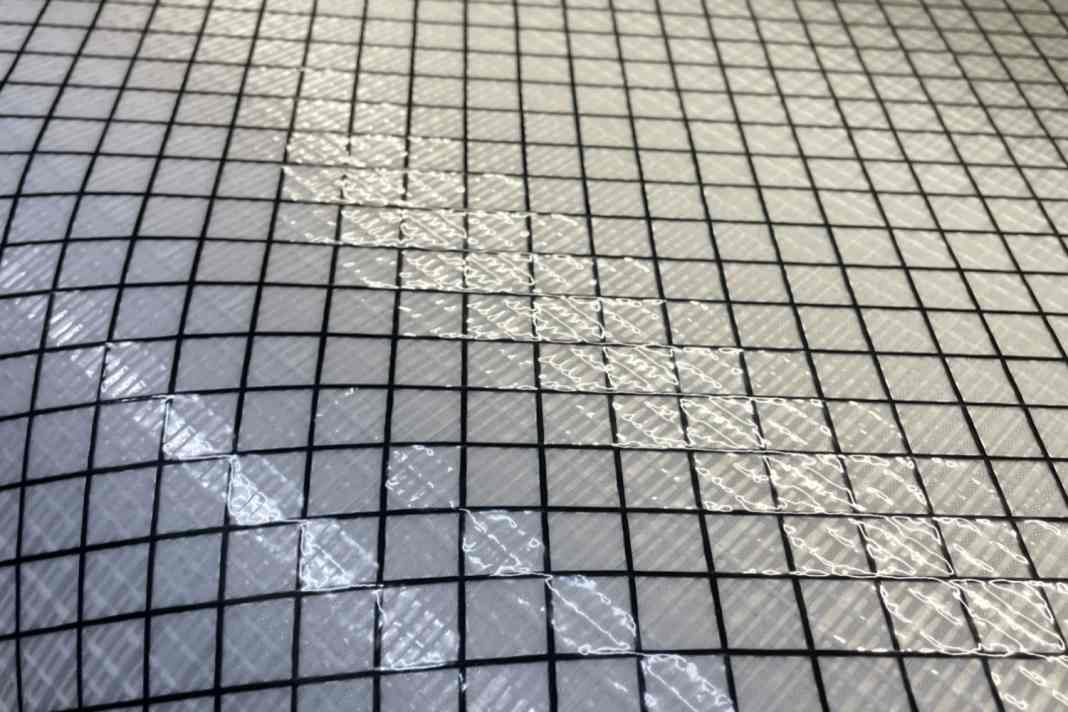





The manufacturer Dimension Polyant with two production sites in Germany and the USA, specialises in foils and laminates used in sailing and windsurfing. Zack Clayton, who is jointly responsible for material development for windsurfing and sales at Dimension Polyant, reveals which of the almost 200 different foils are used in windsurfing and how brands can manage the trend towards ever lighter sails without compromising on durability.
Zack, who in the windsurfing industry do you produce for and beyond?
We produce the laminates and film materials for around 90 per cent of all windsurf sails built worldwide and have been doing so for decades. This ranges from normal mono films as used in racing sails to complex laminates with carbon or Dyneema fibres, as seen in some wave sails. The production of these materials takes place here in the USA and accounts for around a third of our production. We also produce materials for sailing. Here, too, the laminates come from the USA, while the woven cloth materials are produced in Germany.
You have almost 225 different foil materials for windsurfing sails in your programme. Who develops these - you yourselves or do the sail designers come to you with specific material requirements?
It's a mixture of both. Some designers come up to us and say: "We have this or that material in use, but we want something lighter or with different properties". Then we get active and look at which materials might make sense. In windsurfing, the look and choice of colours are also important; these are of course special requests that the brands bring to us. Conversely, with our expertise, we can always incorporate new materials from sailing into windsurfing. Laminates with integrated carbon fibres, for example, have been around in sailing for almost 30 years, but have only really been used in windsurfing sails since 2022.
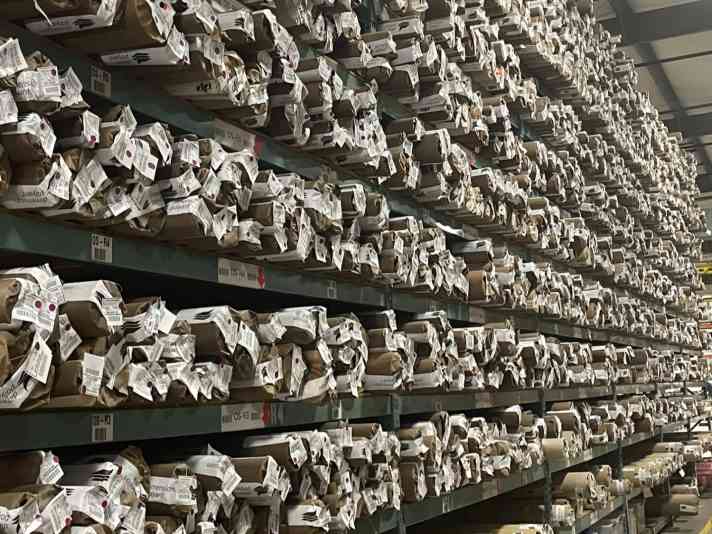
Why is that? Why are some materials only now being used in windsurfing?
This is partly due to cost, but is mainly because a windsurfing sail with five or six square metres does not have to withstand anywhere near as much force as the sail of a 20-metre racing yacht. For a racing sail with which you can break the speed record in Lüderitz, normal, clear mono film is still top. It is cheap, very efficient and fulfils its purpose. On a racing yacht, it would break immediately. In the past, windsurfing sails were mostly made from materials according to the "good & cheap" scheme, but for some years now we have been observing that the desire for special materials has also found its way into the windsurfing sector.
225 materials, that sounds like an incredible amount. How can we imagine that - do you store them all in the factory?
With the exception of a few, we produce the materials directly for the customer. Film thickness, colour, type of integrated fibres - all this is defined by the customer and only then do we produce it in the desired quantity. It is therefore a custom product. The minimum quantity is around 1500 square metres, which the machine can produce in just under three hours. But every time we want to change something about the material, even if it's just the colour, the machine stands idle for two and a half to three hours. These are of course costs that have to be factored in.
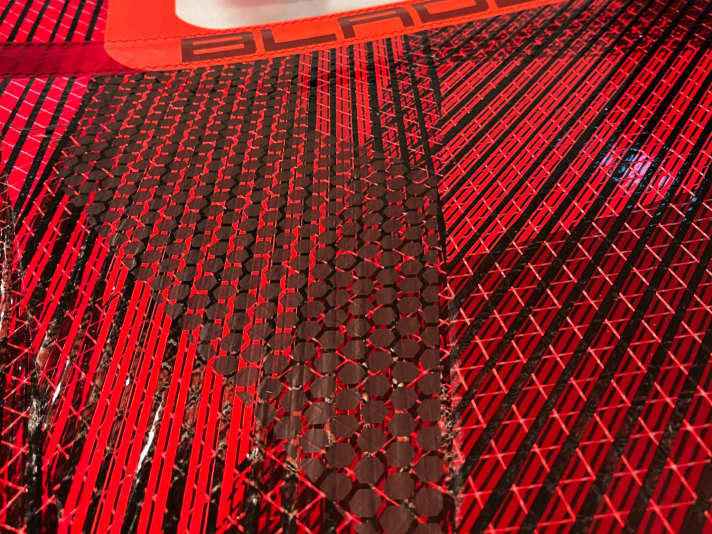
What does the production of materials for windsurfing sails actually look like?
Normal clear mono film is of course very simple, but in windsurfing sails it is usually two thin foils that are glued together. Certain fibres made of polyester, aramid, carbon or Dyneema can also be glued into it. The adhesive used is based on a chemical reaction, so it doesn't matter how hot or cold it is while surfing, the bond will always hold equally well. Solvents must be used to apply the adhesive to the foils. In the USA and the EU, these have to be oxidised in a technically complex process to prevent them from being released into the environment.
The sail material is roughly created as follows: The first layer of the thin film is mechanically wetted with liquid glue. This then runs through an oven around 25 metres long, where the environmentally harmful solvents are eliminated. The film then runs through the X-Ply machine, in which the desired fibres are laid in the previously defined pattern. Of course, we can precisely control the alignment and angle of the fibres. The second layer of film and adhesive is then placed on top and the layers are pressed together at a temperature of 120 degrees using steel rollers. Finally, the material is cooled, the edges are trimmed and it has to be stored for three to five days. It's not a moon rocket, but it's not something you can just copy. The final step is quality control before we cut the film into handy rolls of 100 metres each, which are then delivered to the sail brands.
In recent years, the sails of many brands have become lighter and lighter. Critics say that the only way to make them lighter is to leave them out, which means they are less durable.
If you want it to be lighter, you have to find a way to keep the stretch under control. Otherwise you have the problem that a sail is light on the scales but stretches, making it look baggy and heavy. Normal mono film in seven mil thickness (one mil corresponds to 0.0254 millimetres, the ed.)as used in racing sails is really good in terms of stretch, but it is heavy. The thinner the film becomes, the more stretchable it is, unless you glue in fibres that can take the load. High-tech fibres such as carbon, aramid or Technora are perfect for this. Our lightest material for windsurfing currently weighs around 85 grams per square metre. It is stable, but it stretches differently - these are things that designers always have to weigh up against the background of the area of use and the sail profiles. And, of course, you have to be honest and realise that: The foil used is only one part of the puzzle. The reinforcements and battens contribute even more to the overall weight in percentage terms. All in all, the sail designers have to tweak everything in order to end up with a lighter sail that is still comparably stable or even stronger.
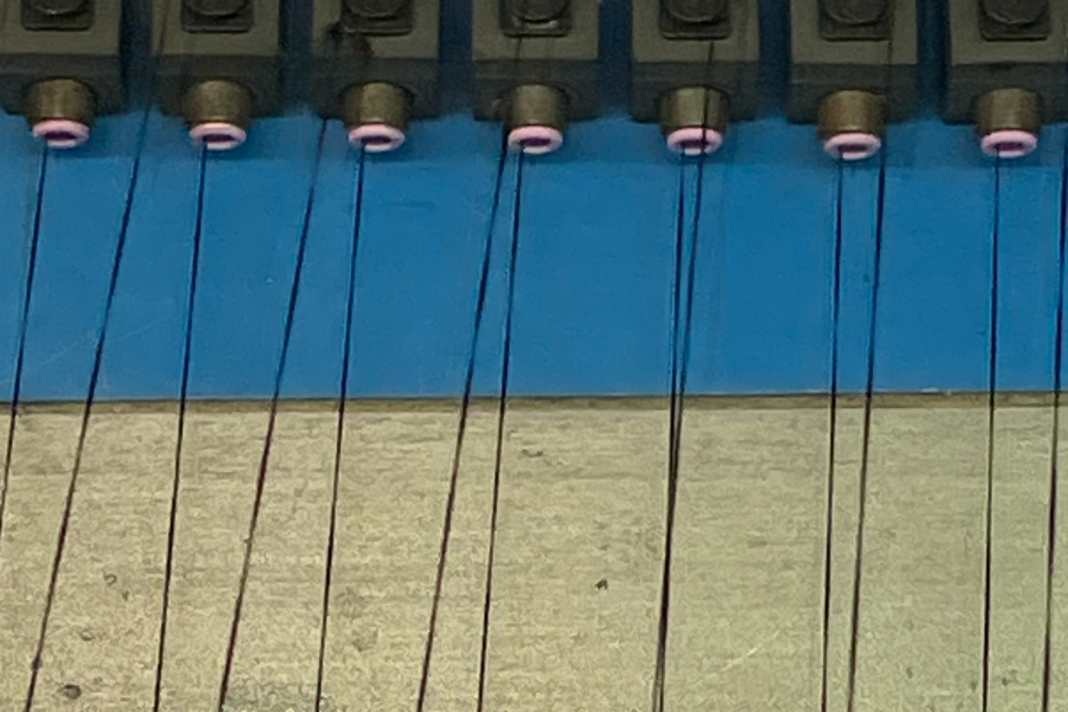



Are new materials tested before they are used in sails?
We carry out standardised industry tests here, as is customary in our sector. There are also windsurfing-specific tests. For example, the materials are rolled very tightly in both directions or spun for eight hours in a kind of washing machine and then analysed afterwards. These are not highly scientific tests, but simply practice-orientated. We also have a test device with which we can test UV stability.
UV radiation is one of the main causes of damage to sails because it makes the film brittle. From this point of view, isn't a lightweight sail with a thinner film necessarily worse than a sail with a thicker film?
Thick film is stronger when it comes to point loads, i.e. when you hit the sail on a sharp stone or fence. However, thinner film is more flexible and is less likely to buckle, for example when furling and rigging. The worst in terms of UV stability is clear mono film - if it has been damaged too much by the sun, it will simply tear through in the event of a fall. What greatly improves UV stability is the adhesive. So instead of using a single film with a thickness of four mils, for example, two bonded 2-mil films are much better, because the bonding adhesive contains UV blockers. Coloured film is also more UV-stable because parts of the UV light are reflected. The prejudice that "thin material is less stable" is therefore only true when it comes to point exposure. In other aspects - flexibility, UV stability, weight and so on - such material can actually have many advantages. Adhesive films also offer brands other options: For example, it can make sense to place imprints or logos on the inside instead of printing on the outside of the finished sail afterwards. This protects the design and the print lasts forever.
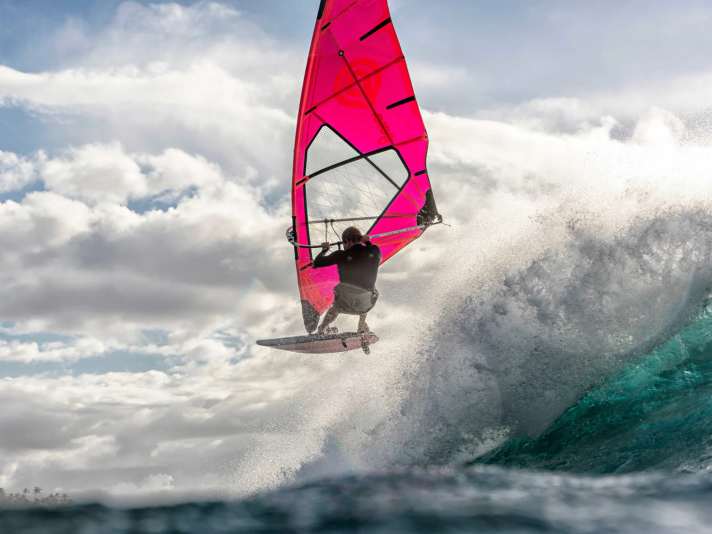
Some efforts are already being made in board construction to replace harmful resins in order to make products more sustainable. Are such aspects also on the agenda in sail production?
Could you recycle a sail if it was only made of clear mono film? Yes, to some extent. It's always a bit difficult with composite materials. With all the different materials and colours, it is almost impossible to split the composite afterwards without negatively affecting the quality and price. And when it comes to recycling, it only makes sense if the quality is right. A product that lasts a long time is better for the environment than one made from recycled materials that breaks down immediately.

